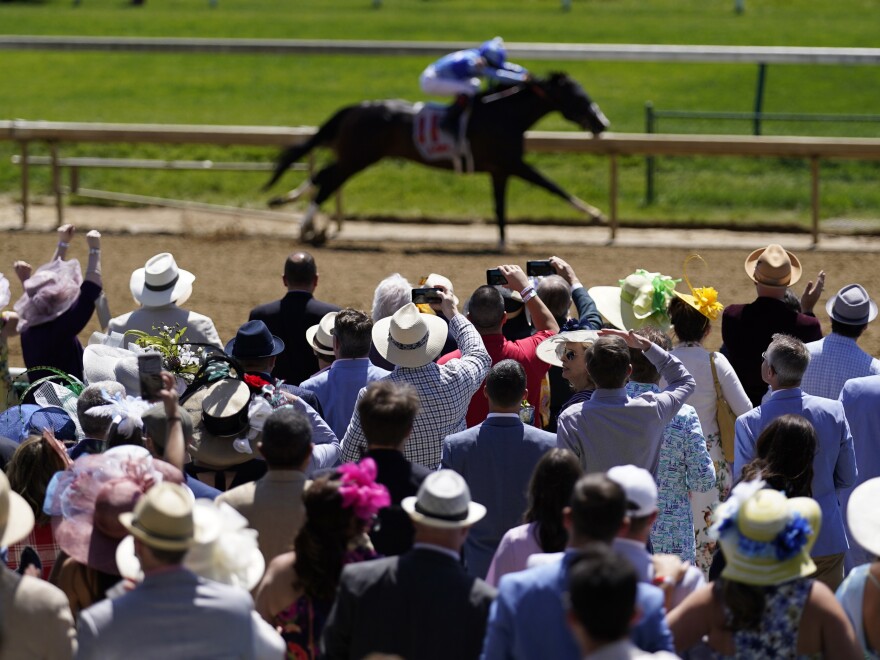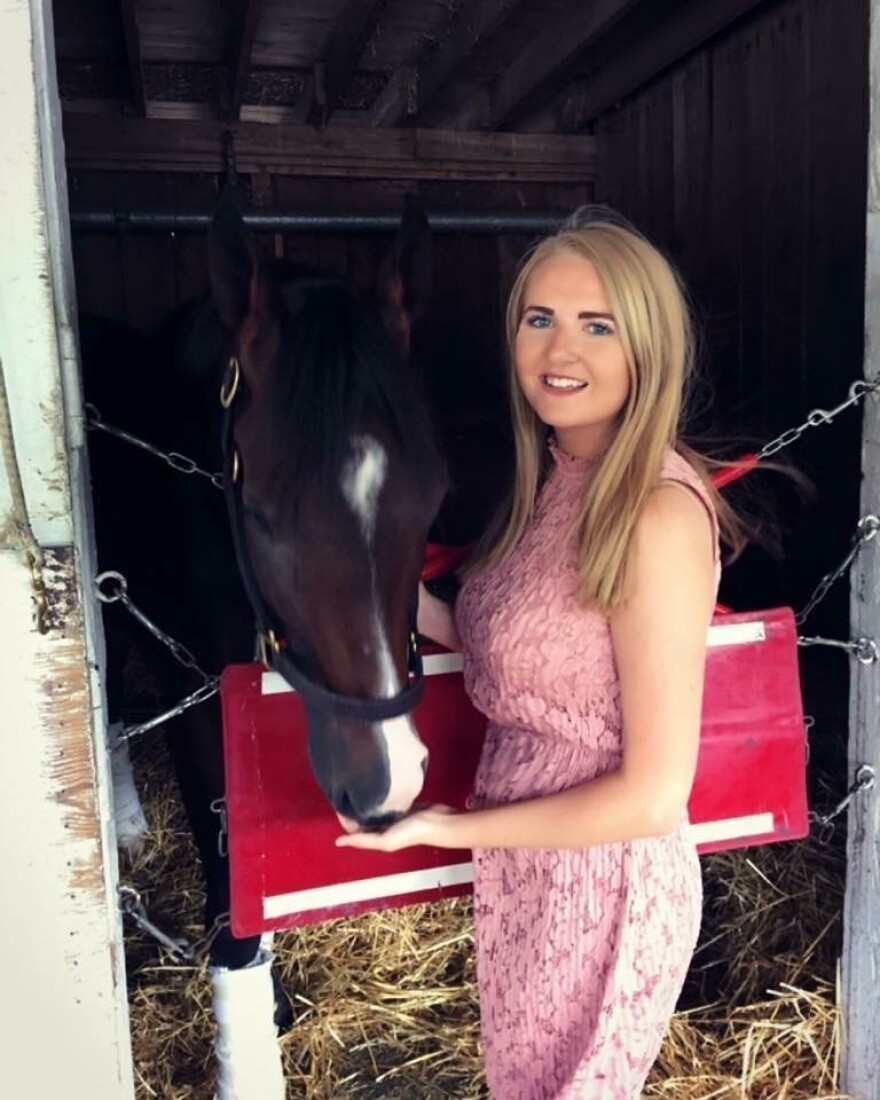
After spending roughly a decade in the horse racing industry, Mary Cage's love for the animals wasn't enough to keep her in a job that she couldn't stomach anymore.
In recent years, headline-grabbing tragedy and scandal has dogged the horse racing industry.
In 2019, during the course of a single racing season, more than 30 horses died at California's Santa Anita Park. Allegations of doping have followed owners and trainers of Triple Crown winners. And in March 2020, 27 people were indicted over an alleged racehorse doping scheme.
Cage, who walked away from the industry at 26, recently wrote that the tragedy of Medina Spirit, whose 2021 Kentucky Derby win was stripped and who died in December, forced her to question the direction of the industry.
"I do think that the love for horses is still very much deep-rooted in the industry, but that there is so much change that needs to be made," Cage told NPR. "And as an old sport, horse racing has a tendency to be stuck in tradition, and therefore is often very resistant to change."
From the fashion, mint juleps and — of course — actual horse racing, Saturday's Kentucky Derby is an event steeped in tradition.
From the outside, the industry as a whole looks the same as it always has. But underneath the glamor and excitement, the more than 100-year-old industry is on the cusp of a major transformation.

Congress steps in
Congress stepped in last year in response to the high-profile doping and abuse allegations plaguing horse racing.
Lawmakers approved the Horseracing Integrity and Safety Act (HISA) of 2021, establishing a self-regulatory organization called the Horseracing Integrity and Safety Authority.
The Safety Authority is tasked with regulating both racing safety and anti-doping control. It's currently establishing one, uniform set of standards. The safety rules have been approved by the Federal Trade Commission and are set to become effective July 1. They are also working on anti-doping rules to become effective July 1, 2023.
Since its inception in the U.S., the horse racing industry has largely existed under a patchwork set of rules across the dozens of states that host horse racing. For example, each state can have different standards on the use of whips during a race and even the types of medication horses can be given.

This is unlike other major sports leagues in the U.S. The NBA, for example, has one set of standards and rules for all athletes and teams.
The punishments for horse trainers or owners who violate these rules also differ based on jurisdiction. If they are found to have violated rules in one state, they can often participate in a race in another state shortly thereafter.
The creation of the Safety Authority gives Cage hope that a new dawn is coming for horse racing.
"I think that HISA's going to be one of the most comprehensive steps towards uniformity and towards the safety in horses and humans and racing we could take," Cage said.
Tensions are running high
Elsewhere, state-level horse racing commissions and industry groups' feelings towards the upcoming changes range from trepidation to out-right hostility.
The National Horsemen's Benevolent and Protective Association — which represents thoroughbred racehorse owners, trainers and other personnel — filed a federal lawsuit against the Safety Authority. The organization, along with several state affiliates, sought the end of the authority and questioned its constitutionality. But last month, a judge sided with the safety authority.
A separate lawsuit filed in Kentucky by racing commissions in West Virginia, Oklahoma and the U.S. Trotting Association is still pending.
"Everyone would prefer that it not exist. I don't think that's an unfair statement," Scott Chaney, executive director of California's Horse Racing Board, told NPR.
Following the mass deaths in Santa Anita Park, California made dozens of new rules to make horse racing safer, he said.
"The irony is not lost on me that part of the reason [HISA] exists is because of the catastrophic injuries that occurred in California in 2019," he said. "But I would submit three years later, we're probably no longer in a position of needing something like HISA."
In fact, California's rules would be more strict than some found in the HISA, he said. The federal legislation doesn't allow for a stricter interpretation on safety rules under the organization's authority.
The HISA has rules on the use of whips on horses which are less strict than California and New Jersey's own policies, for instance.
"Under the rules, jockeys are limited to using the whip six times, but no more than twice in a row 'without giving the horse an opportunity to respond,' " according to the Daily Racing Form.

"We're not over the moon that it's going into effect," Chaney said. "We recognize that it's federal law and believe that we should support it and try to figure out the best way to make it work."
California was the first state to opt in. It has agreed agree to collect and remit fees tied to the Safety Authority, and it must pay around $1.4 million.
That amount differs widely by state.
Iowa, for example, received a bill of around $215,000, according to Brian Ohorilko, the director of gaming at Iowa Racing and Gaming Commission.
Ohorilko told NPR that he too wonders whether the creation of the Safety Authority will be more burdensome than beneficial.
Chaney predicts that the price of joining the Safety Authority will ultimately kill the smaller racetracks in some states.
"I think it's fair to say that there will be some contraction in terms of the number of racetracks because of this because they will not be able to comply over time," he said. "But I think the ones that are able to comply will be much better positioned, much stronger, and overall horse racing will be in a better position."
As for Cage, she isn't sure when, or if, she will return to horse racing. There's so much change she wants to see done to the sport. She's hoping to be a part of that.
"I think that there needs to be a big, sweeping change to really clean up the sport," she said. "I am an ally of horse racing, but I am an ally that's demanding improvement for the sake of the sport's horses and its people."







